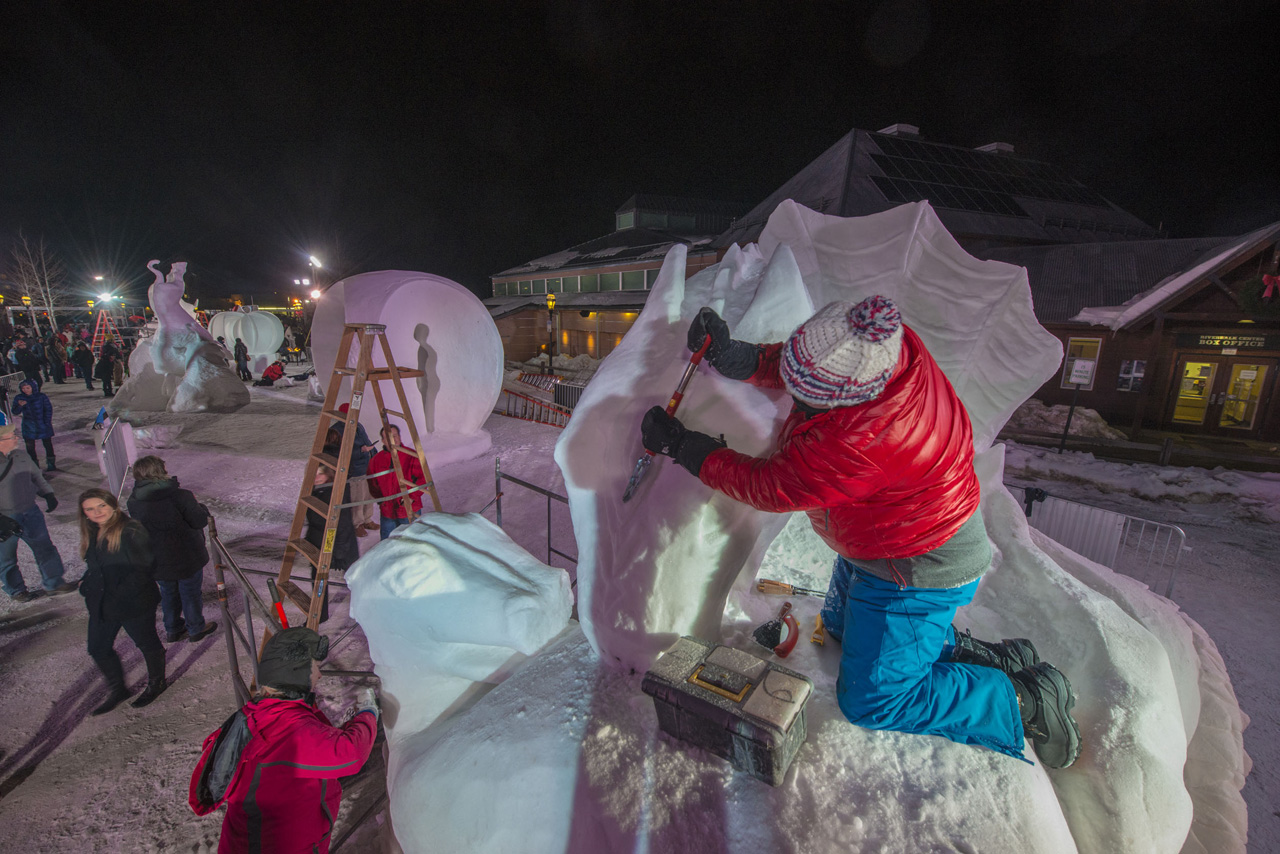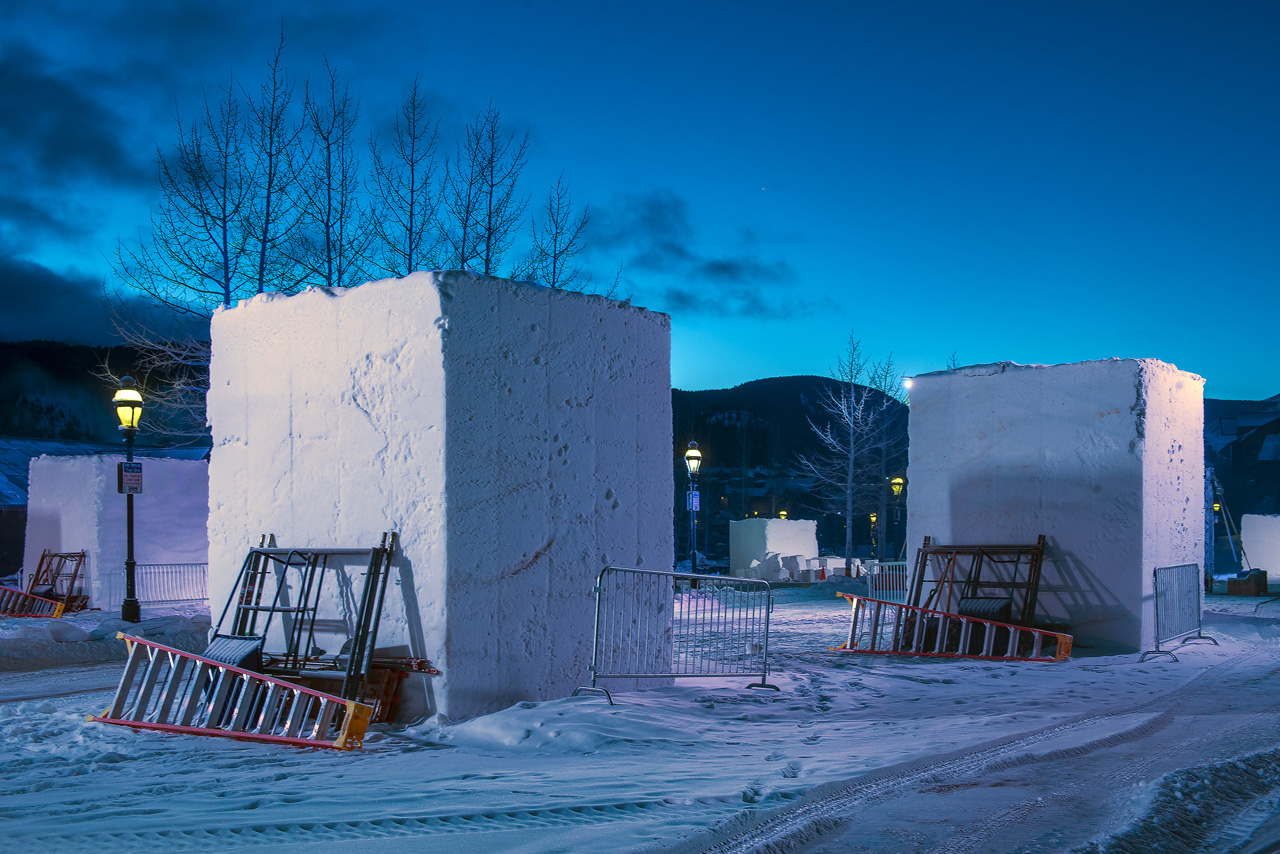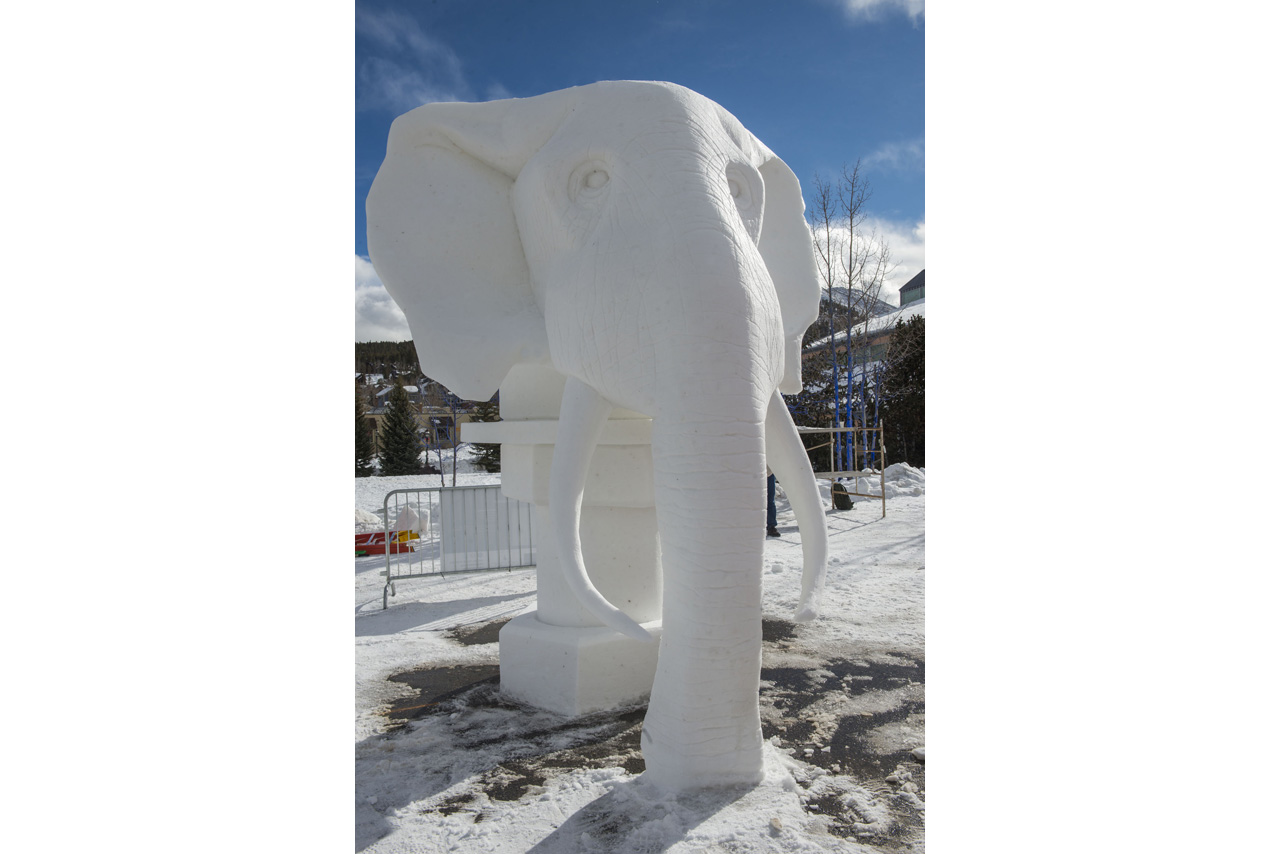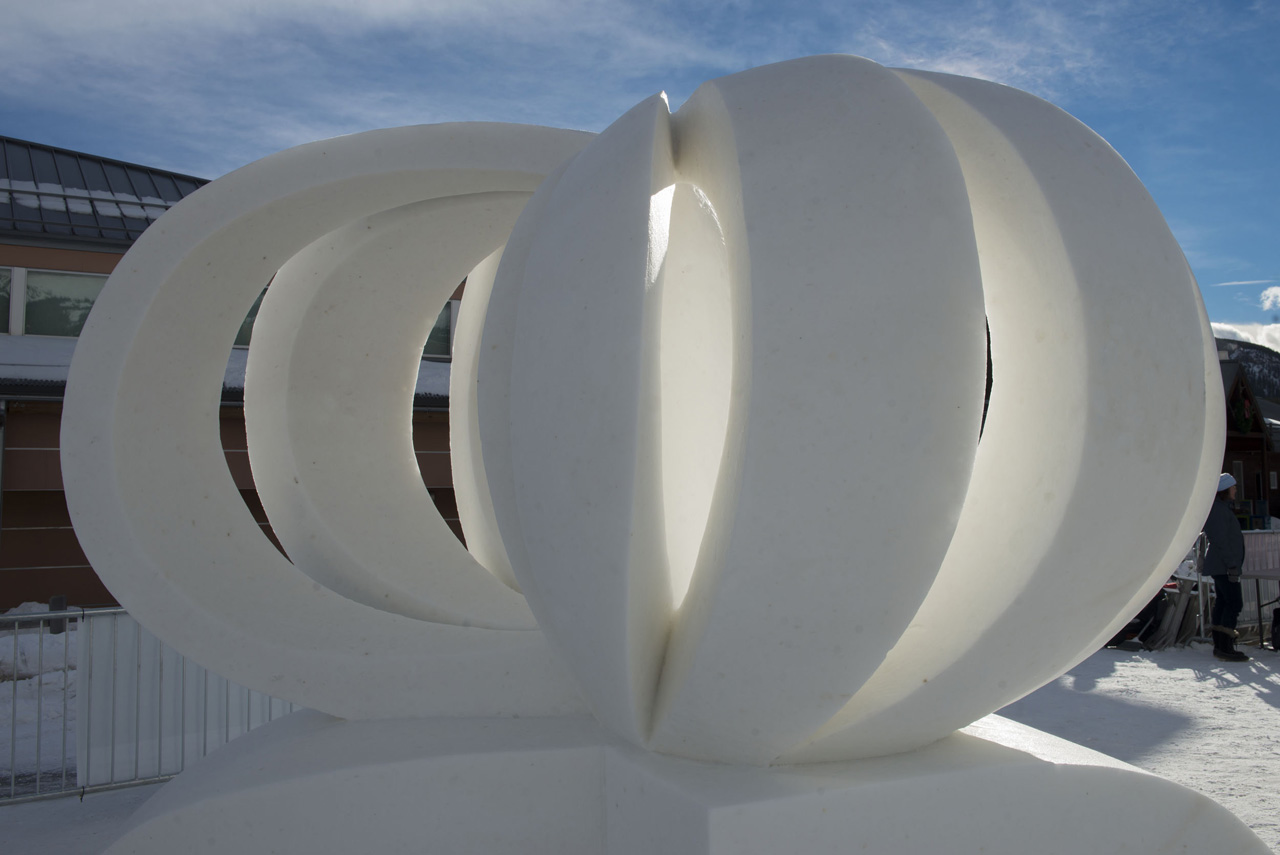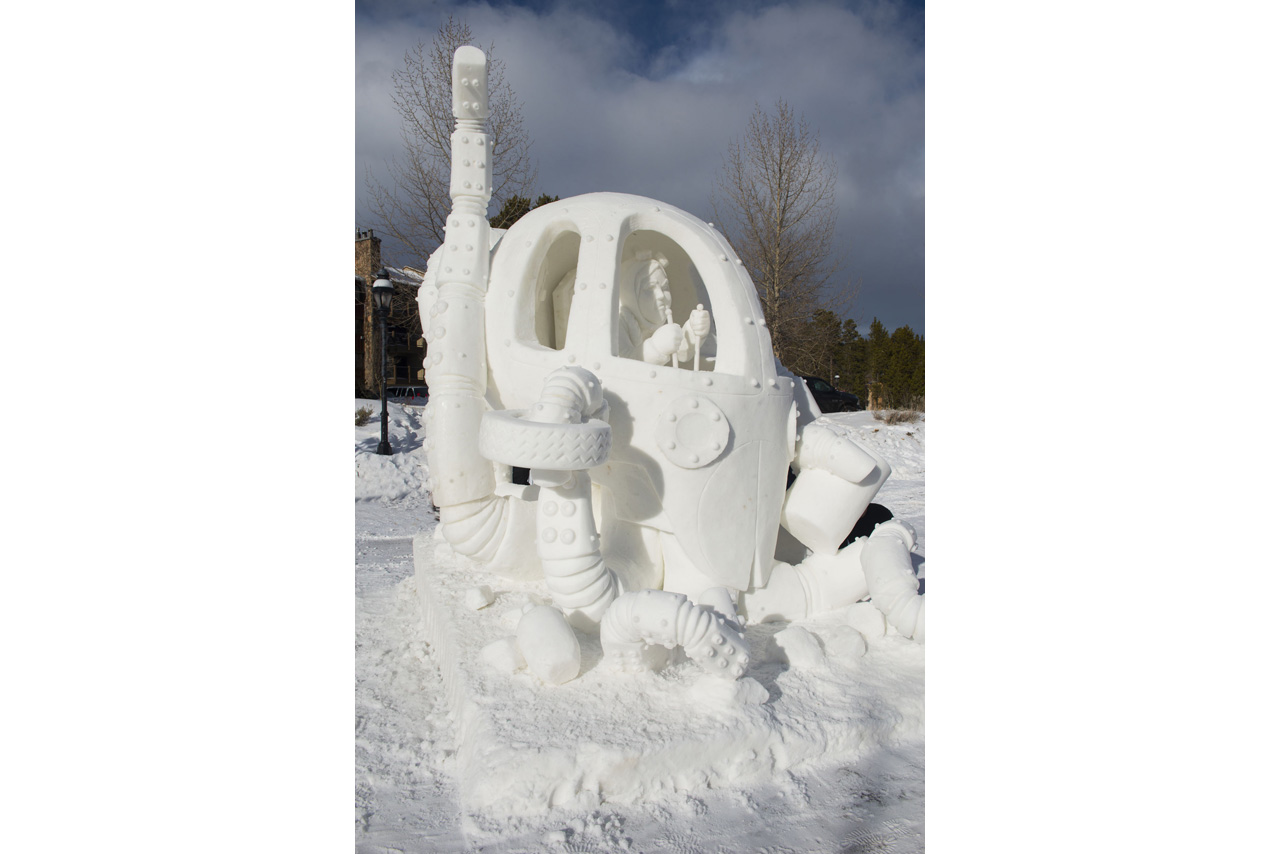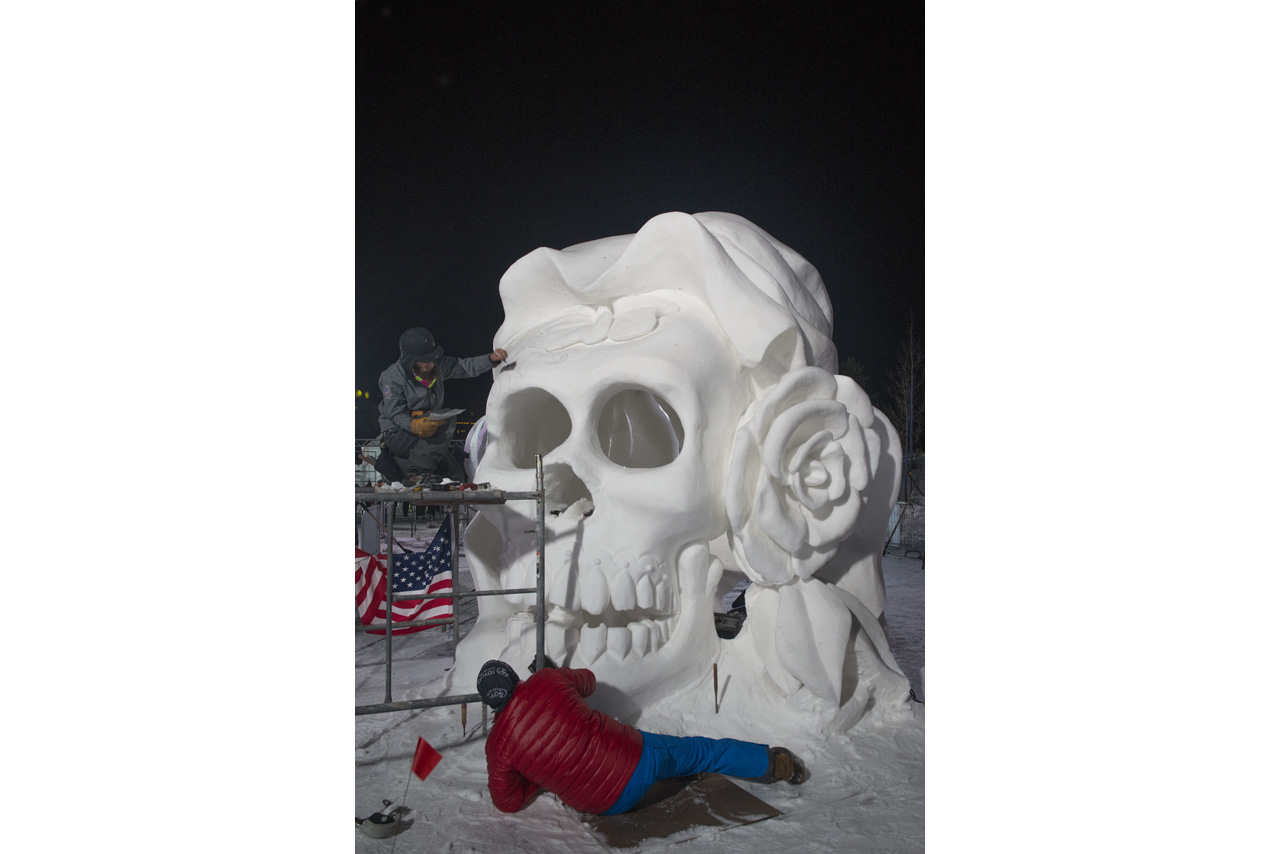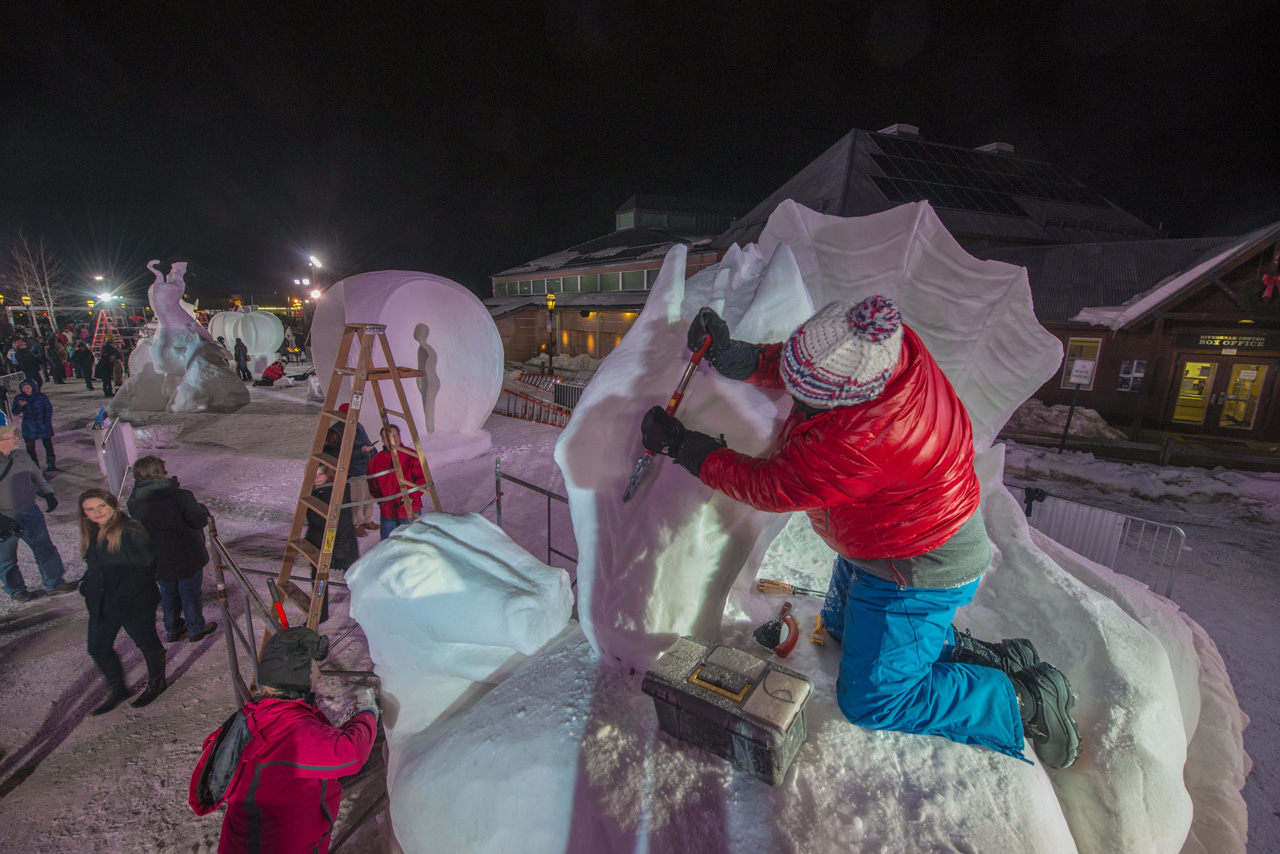The Local newsletter is your free, daily guide to life in Colorado. For locals, by locals.
At 11 a.m. on Tuesday, January 26 in Breckenridge, the 26th International Snow Sculpture Championships began with the traditional cannon blast. In a flurry of saws, ice chippers, and trowels, 16 teams from all over the world went to work on their respective 24-ton block of snow. Each four-person team had 65 hours to turn a 12-foot tall ice rectangle into a work of art.
As of Friday night, the majority of teams were still carving. Some, like Team Great Britain, were adding final details—meticulously chiseling scales onto the dragon featured in their sculpture “Tale of Two Dragons.” Others, like Team Loveland Colorado, were still forming the main body of their piece, scraping the snow to bring forth the ears of an enormous elephant head in “Bolting from Extinction.”

The members of Team France, who arrived late due to a mechanical issue with their flight, were worried that they might not make the cut-off time of 10 a.m. the following morning. Their ambitious sculpture of a fairy creature busting from a Celtic stone, “Oniric Metamorphosis” appeared to have a long way to go to fully materialize from the snow block. “We’ll work all night if we have to,” said the youngest of the group with a wry grin.
Team Germany was unfortunately already out of contention, their abstract sculpture “Metanoia” collapsed earlier in the day. “The Germans are known for pushing the envelope with their gravity-defying designs,” said Sandy Metzger, International Snow Sculpture Championships director. “The risk is part of the appeal of their work.”
Despite the long hours that lay ahead for most of the teams, spirits were high Friday night. Sculptors smiled for the camera and joked with the many admiring tourists weaving through the art-in-progress. As temperatures continued to drop, volunteers walked around with complimentary shots of award-winning craft bourbon from Breckenridge Distillery. Teams posed together, glasses in the air.
By Saturday at 10 a.m., all the teams had finished, even Team France. Team Vermont claimed they only got about one hour of shut-eye, pulling an all-nighter in order to add detail to their whimsical sculpture “Rhonda and her Recycling Robo-Octopus,” which depicts 14-year-old science whiz Rhonda riding inside her invention—the Robo-Octopus–which helps clean the ocean floor. Their extra effort paid off. At the awards ceremony later that afternoon, Jenn Cram, judge coordinator and director of public programs and engagement for Breckenridge Creative Arts, announced that Team Vermont had won gold.
Commenting on behalf of the judging panel, Cram spoke to a standing-room-only crowd on stage at Riverwalk Center: “Vermont’s sculpture is visually delightful, it appeals to the child in all of us while addressing a serious global issue. The piece combined both technical risk and a high level of detail. It is superbly executed in 360 degrees.”
Silver went to Team Switzerland’s technically daring abstract sculpture “Converse,” which collapsed shortly after judging completed. Team Loveland took Bronze for “Bolting from Extinction.” Team USA-Wisconsin won the coveted Artists’ Choice Award for “Dia de los Muertos,” a hauntingly beautiful skull adorned in traditional Hispanic inscriptions and flowers, as commonly seen during the Day of the Dead holiday. And finally, Team Breckenridge won the People’s Choice Award for “The Widow Maker.”
The 16 teams were selected from more than 40 applicants and represent 12 different countries, from Canada to Mongolia. Each sculpture was created without the use of power tools or internal support structures.
All sculptures are on display in the Tiger Dredge parking lot behind the Riverwalk Center until Sunday, February 7. Visitors can check the works out for free. Visit GoBreck.com for detailed information. 150 W. Adams Ave., Breckenridge



